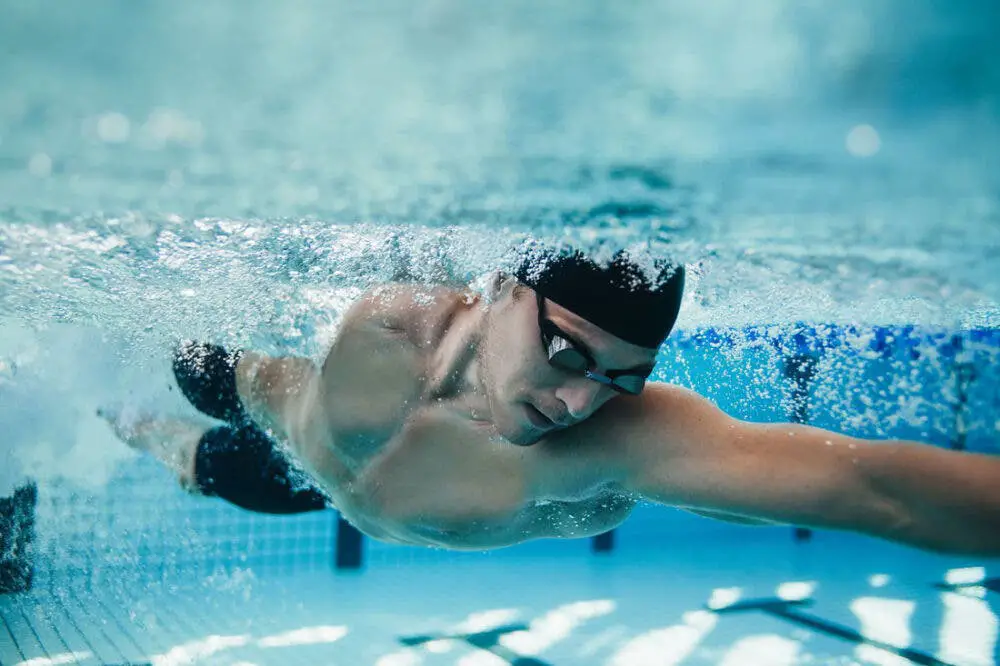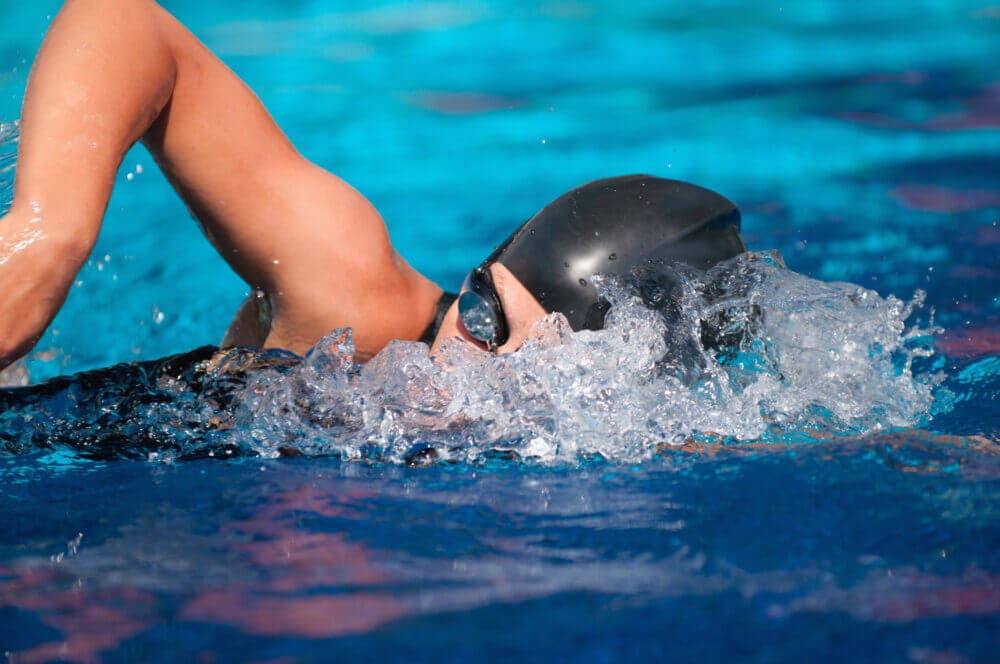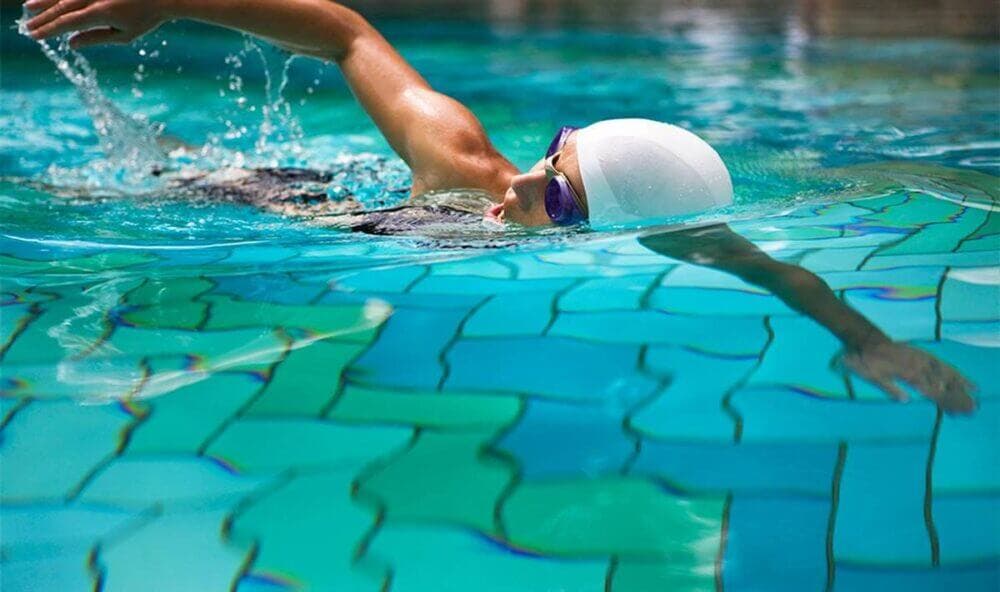Technique is essential when swimming. Inside the water, we are faced with a substance much denser than air; therefore, we need to multiply our efforts to move forward. Even so, our speed will always be lower in a swimming pool than riding a bicycle, for example. Now, it should be noted that there are various tricks to reduce water resistance in swimming . If you want to be a better swimmer than you are now and exceed your goals, you just have to keep reading this article.
front resistance
When we start swimming, one of our obstacles is frontal resistance . There are three types: friction, pressure drag, and surface friction. All of them can significantly influence the reduction of times. For this reason, in this section, in order for you to improve every day in this sports field, we are going to explain various tricks to reduce water resistance in swimming .
Keep your body aligned
A straight body will always generate less frontal resistance than one that is bent. It is true that, necessarily, we have to bend to a certain extent to propel ourselves, it is the case of the undulation of the hip, for example. Now, exaggerating this position will cause us to have to fight against more mass of water. What is the solution to this problem? Strengthen our core out of the water. If we have this part of the body exercised, our movements in the pool will be recommended.

keep your head down
This point is related to the previous one. And it is that placing the head in a lower position allows us to keep the body straighter. It also reduces the impact surface against the water.
On the other hand, there are times when it is highly advisable to keep your head under water, such as at the point of oscillation , that is, at the fastest.
Keep your elbow high
Regardless of the swimming style we adopt, it is the upper arm that causes most of the frontal drag . In this way, if we keep the elbow closer to the surface and in line with our body, we can reduce the frontal drag. The reason is that the latter is caused by the forward movement of the upper arm during the catch.
Use advanced swimwear
Not all fabrics are the same or reduce friction to the same levels. Try to train with swimsuits of different materials and check the difference in your abilities with one and with another. Analyze the fabrics that produce less frontal resistance and get the one that most convinces you.
shave
The hair adds more friction in the water . In this way, professional swimmers shave in order to get even one second of time in each of their races.
Practice the flip
In the flip our body stays straighter and, in addition, it is a good time to take advantage of the momentum. Making this type of change is complicated, but if you put it into practice you will save time on each of the pitches, since you will not have to reach the end of the lane, brake and start again.
wear two hats
Both the hair and the mane are very involved in the speed at which we move in water sports. Therefore, the cap helps us reduce water resistance in swimming . Now, if we also reduce the friction of the silicone of the first cap with another one made of a thicker material than the first, we will notice the difference considerably. Another trick is to put the goggle straps between the first and second caps , thus eliminating goggle friction.
hydrodynamic position
Another way to reduce drag in the water is through hydrodynamic positioning . In this way, it is advisable to position the head well, keeping the water level at the level of the hairline to maintain a continuous rhythm in the kick .
Two-sided breathing
With this type of breathing we will achieve a symmetrical style of swimming . Also, balance and stability in the water will improve.

Accelerate hand under water
This simple gesture allows us to add greater force to each of the movements that we execute with the upper extremities . Regardless of how fast we are swimming, the hand should always accelerate at the end of the stroke.
Count the number of strokes
Counting the number of strokes is a great option if we want to measure the effectiveness of swimming. It is a way of challenging ourselves in order to gradually reduce their number . When we are aware of our progress, we will be more inspired to continue improving.
Includes drills in each training session
Working on coordination on a daily basis will allow us to achieve new technical adaptations, while helping us maintain those already achieved.
Maintain a relaxed recovery during the swim
This fact gives us the opportunity not to waste energy while swimming . Likewise, we will be able to avoid numerous injuries, especially in the shoulders.
Take care of the entry of the hand in the water
We must avoid hitting the water suddenly when the hand enters it, since we increase the resistance. This is because the flow of the water in front of us changes, making it more difficult to hold on with each stroke.
Strengthens legs and arms
If we strengthen our body , the force of the water will resist us less. In this way, training our extremities hard will help us reduce friction . A great way to do this is to perform reps with just your arms or just your legs.
Add sprint series
Varying the rhythm in the series of repetitions or adding an extra sprint at the end of each exercise are other tricks that professionals take into account when reducing water resistance in swimming .

Tips to swim better
In addition to everything explained above, there are many other tips that we can implement to swim better. Next, we explain the most significant ones. If you take into account every detail you will notice the changes and the evolution in a short time. The most important thing, always, is perseverance and self-confidence.
stay on the surface
To achieve this, the body has to be high in the water , keeping the hips and legs as close to the surface as possible. An easy way to do this is to put pressure on your core and chest. The posture must remain straight and compact at all times .
head direction
The top of your head should point to the point you want to head towards. A little trick is to imagine that you have a laser light on your forehead. This must have constant coordination in each stroke.
Body’s movement
The body must turn rapidly from side to side . How do we get it? Using both the hips and the core to rotate. There are many who use their head and shoulders to carry out the turn, but, without a doubt, it is a big mistake. So much so that we can get to hurt ourselves and, in addition, not meet any of our proposed objectives. This fact will frustrate us and could harm us in each of our training sessions. In this way, we must not forget the importance of technique .